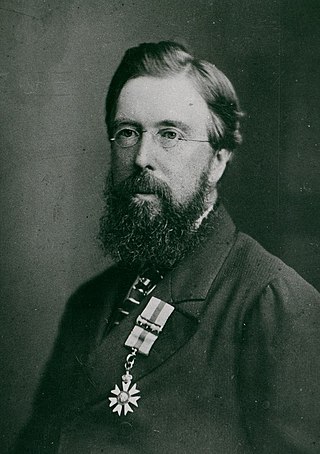History
The Society's early history
The TSA has its origins in the Telegraph Electrical Society, formed in Melbourne in 1874, twenty years after the installation of Australia’s first electrical telegraph line (Melbourne to Williamstown, 1854), and two years after the completion of the Overland Telegraph Line caught the national imagination. The purpose of the Society was ‘The promotion of the knowledge of electricity, especially as connected with telegraphy’. [1] The Society regularly published a booklet called ‘Transactions’ to record its activities. [1] [2]
When the colonies’ telegraph and telephony services were nationalized, with the formation of the Commonwealth of Australia in 1901, many of the society’s members became employees of the newly formed Australian Postmaster General’s Department. The Society was reconstituted on 11 November 1908 as the Postal Electrical Society of Victoria, which contained both Telephone and Telegraph Branches. [2] The inaugural President, Henry Walter Jenvey, made it clear that the objectives of the Society were broad: "The field of study is not only electrical. It is too often thought that knowledge of electricity and electrical laws is sufficient to fit an officer of this branch for his duties - but that is not the case - that fact is becoming more widely recognized in all electrical engineering concerns, whether private or Governmental. Before a person can deal satisfactorily with, and solve electrical engineering problems, whether telegraph or telephone, he must be fortified with sound general knowledge. Knowledge of electrical laws itself is not sufficient, he must have a knowledge of things which are taught in schools and universities - without that knowledge he will always find himself deficient." [2]
That broad perspective has been maintained by the Society in its different incarnations up to the present.

One of the early lecturers at society meetings was the inventor of the telephone, Alexander Graham Bell. Dr Bell visited Melbourne in 1910 and inspected Australia’s first automated central telephone exchange during its installation. He honoured the Society at a function held in the Exchange on 17 August 1910 prior to its formal opening. [2]
In the inter-War period, there also existed telecommunications lecture societies in New South Wales and South Australia. The technical papers delivered before each Society were printed and distributed to members, and a limited number forwarded to other States. [1] The Postal Electrical Society of Victoria initiated action to have the various papers published in a new periodical - the Telecommunication Journal of Australia (TJA) which first appeared in 1935, and which has been published at least twice-yearly ever since, even during the World War II years 1939-45.
The Postal Electrical Society of Victoria was reconstituted by the Postmaster-General’s Department (PMG) in 1959 as the Telecommunication Society of Australia (TSA), an unincorporated organization, operating as a subsidiary controlled by the PMG. All twelve members of the TSA's Council of Control were constitutionally required to be officers of the Central Administration of the Australian Post Office, the business name adopted by the PMG. [2] The position of Editor-in-Chief of TJA, created in 1960, was then filled by a succession of engineers, all (until 1994) employees of the Australian Post Office (APO) and its successors Telecom Australia and Telstra. [3]
In 1991, following the introduction of competition in the Australian telecommunications market, the links between the Society and the former monopoly Telstra were formally severed, so the TSA could serve the whole industry. (Telstra however remained the principal sponsor of the TSA until 2005.) The Society was incorporated as the Telecommunication Society of Australia Ltd, a not-for-profit independent company in 1993, chaired by a former Telstra executive, Professor Peter Gerrand, who became the Society’s longest serving Chairman (1993–2003) and Editor-in-Chief of TJA (1994–2014). The TSA’s inaugural Chief Executive Officer was Blair Feenaghty (1994–2005).
Throughout its long history, the Society has kept its membership informed on the latest major developments in telecommunications by means of journals, newsletters, monthly lectures and occasional monographs. It has also provided a neutral meeting place for the industry, where employees of competing organizations can meet to discuss topics of common interest across the industry.
The Society has always maintained a broad view of the field of ‘telecommunications’, which has allowed it to evolve with the industry it serves. From the 1930s, the monopoly PMG was given responsibility for providing the radio distribution network for Australia’s first national public broadcaster, the [[Australian Broadcasting Corporation]Australian Broadcasting Commission]] (ABC); and from 1956 responsibility for supplying the TV distribution network for the first national public television channel, also produced by the ABC.
With the convergence of digital telecommunications technology with that of the computing industry in the 1980s, and the further convergence via the Internet of telecommunications with digital broadcasting and Internet communication services, the membership of the TSA (now TelSoc) has become increasingly multi-disciplinary. [4]
The formation of TelSoc
In the second half of 2008 TSA was absorbed into the Australian Computer Society as its Telecommunications Special Interest Group (SIG), which became known as the ACS-TSA under the ACS Telecommunications Board. [4] The transfer of membership and assets (including TJA) to the ACS was achieved through the leadership of Professor Reg Coutts, the final Chairman of TSA Ltd (2005-8) and inaugural Chair of the ACS Telecommunications Board, which directed the ACS-TSA until December 2012. However, in July 2013 the same leadership group of the TSA, led by Professor Reg Coutts, broke away from the ACS-TSA to form a new society TelSoc in order to continue the traditions of the historical TSA. When ACS refused to return TSA's historic name or that of its Journal to the former TSA leadership members, they were forced to create new names for the society (the Telecommunications Association - abbreviated to TelSoc) and for its Journal (see below).
In the tradition of the TSA, TelSoc has continued to offer monthly lectures, special industry networking events, an informative website and the quarterly online Journal of Telecomunications and the Digital Economy (JTDE), successor to the Telecommunications Journal of Australia (TJA) – as the industry’s journal of record. The back issues of the TJA (since it went online in November 2007) are archived online by Swinburne University of Technology.
Evolution of the Society's Journal: TJA to AJTDE to JTDE
In 2010 TJA celebrated its 75th Anniversary, having published at least two issues per year every year since June 1935 – including the WW2 years 1939-45. From June 2013, TJA was renamed as the Australian Journal of Telecommunications and the Digital economy, published by TelSoc. In January 2015 Dr Mark Gregory succeeded Professor Peter Gerrand as Managing Editor of AJTDE. [5] In 2019 the Editorial Board of AJTDE decided to emphasize its international scope by changing the title of the journal to the Journal of Telecomunications and the Digital Economy (JTDE). In 2020 Mark Gregory was succeeded by Dr Leith Campbell as Managing Editor of the Journal.










